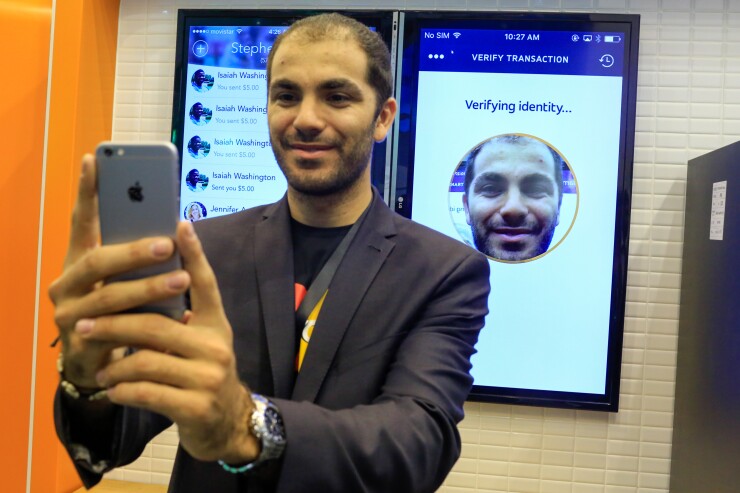The recent explosion of activity around biometrics and other new forms of authentication should seem like a good thing for the development of connected commerce. But right now it's more of a wild west that needs to be tamed.
Not only are consumers fed up with the constant hassles of fraud, but the rapidly evolving Internet of Things demands seamless and secure payments to move forward, said Bob Reany, Mastercard’s executive vice president of identity solutions.
“We’ve seen a huge proliferation of innovation around payments identity recently, with lots of breakthroughs around biometrics and device identification, but it’s resulted in a sort of firehose of innovation that’s made it hard for banks, payment networks and merchants to agree on an approach they can build out and standardize,” Reany said.
Mastercard was an early advocate of payment identity solutions leveraging

“When Touch ID came out, everyone said fingerprints were the way to go for payments authentication, but we bet on facial and iris recognition because it offered more data points and less friction, and it looks like time is proving us right on that one,” he said.
Facial recognition holds potential for blocking fraud by imposters, but technology continues to evolve. It’s time for payment networks, banks and device manufacturers to commit to a path forward for securing payments identity, Reany said.
The next year likely will prove pivotal for the industry if it coalesces around a solid approach to securing payments, he predicts.
“We believe Mastercard and other key payments industry players must come together in 2018 to bring forth payments identity solutions we can really scale and integrate,” Reany said.
To push its agenda on industry collaboration, Mastercard is working closely with device manufacturers like Samsung on technology to secure payments via facial recognition. It’s also working with other vendors and participating in industry work groups to reduce dependence on static data like account numbers and personal credentials, which have been compromised by widespread data breaches.
“Between dynamic transaction data, geolocation, matching modalities, plus biometrics and behavioral analytics, we have tremendous resources to improve the way we validate and authenticate consumers,” said Reany.
When the payments industry finally agrees on new technology and standards to secure payments, it will still take some time before those approaches supersede existing processes, Reany said.
“It will probably take at least two more years before we end our reliance on static data, but if we work together as an industry we can get there. Mastercard and the major payment networks are playing major roles in determining standards that work for broad security and cardholder verification,” he said.





